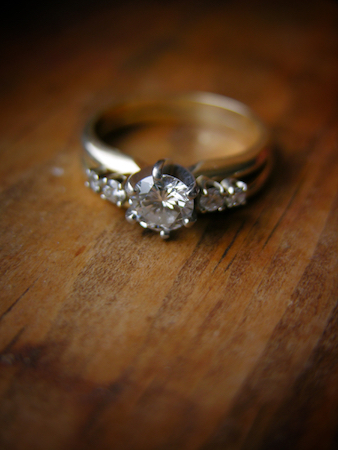Approach #1: The Conditional Gift
In the first approach, courts have treated the engagement ring as a conditional gift. Whether it must be returned in the event of a breakup will depend on who ends it. If it’s the donor, the donee keeps the ring. If the donee ended the engagement, the donor is entitled to demand the ring back. This approach is founded on the notion the engagement ring is something to bind the agreement to marry, given on the understanding that the individual who calls off the marriage is not entitled to the engagement ring.
 For example, in McArthur v. Zaduk [2001], the man cancelled the wedding after discovering that his fiancée had been unfaithful. He argued that she breached a condition of their agreement to marry, sexual fidelity, and so, she was the one who ended their engagement. The judge disagreed. She found there was no firm agreement that sexual fidelity was a condition of their agreement to marry, since the woman never saw fidelity as a hallmark of their relationship. Consequently, the man broke the engagement, and on that basis he was not entitled to the ring.
For example, in McArthur v. Zaduk [2001], the man cancelled the wedding after discovering that his fiancée had been unfaithful. He argued that she breached a condition of their agreement to marry, sexual fidelity, and so, she was the one who ended their engagement. The judge disagreed. She found there was no firm agreement that sexual fidelity was a condition of their agreement to marry, since the woman never saw fidelity as a hallmark of their relationship. Consequently, the man broke the engagement, and on that basis he was not entitled to the ring.
Approach #2: The Unconditional Gift
In the second approach, the engagement ring is viewed by the courts as an unconditional gift, which cannot be recovered if the marriage does not take place. Once it is accepted, the ring becomes the absolute property of the recipient.
As stated in Mastromatteo v. Dayball [2011], “a gift is a gift. Once perfected by delivery, it cannot be recovered. Since a promise to marry cannot be enforced, and long after divorce on a no-fault basis became accepted in Canada, the concept of a battle over ownership of the engagement ring appears artificial and anomalous at the very least.”
Approach #3: The Mutual Promise
Lastly, in several British Columbia decisions, the courts have regarded the “offer and acceptance” of an engagement ring as evidence of mutual promises to marry such that if the contract is terminated, the parties ought to be returned to their pre-contract position: Zimmerman v. Lazare [2007]. The approach is based upon principles of contract and commercial law, rather than the principles of gift.
In Ontario, case law has demonstrated that the courts treat the engagement ring in accordance with the first approach, determined by who broke the engagement. However, in this approach it is often difficult to find who terminated the engagement, either by words or by conduct, as illustrated by McArthur. Moreover, this appears to be inconsistent with s. 33 of Ontario’s Marriage Act, which provides that “where one person makes a gift to another in contemplation of or conditional upon their marriage to each other and the marriage fails to take place or is abandoned, the question of whether or not the failure or abandonment was caused by or was the fault of the donor shall not be considered in determining the right of the donor to recover the gift.”
Conclusion
In conclusion, there needs to be more consistency and clarity in the law with regards to the engagement ring. The preferred approach should be to treat the ring as an unconditional gift to the recipient, so each party is clear on their position and there is no confusion in the event a marriage does not occur.